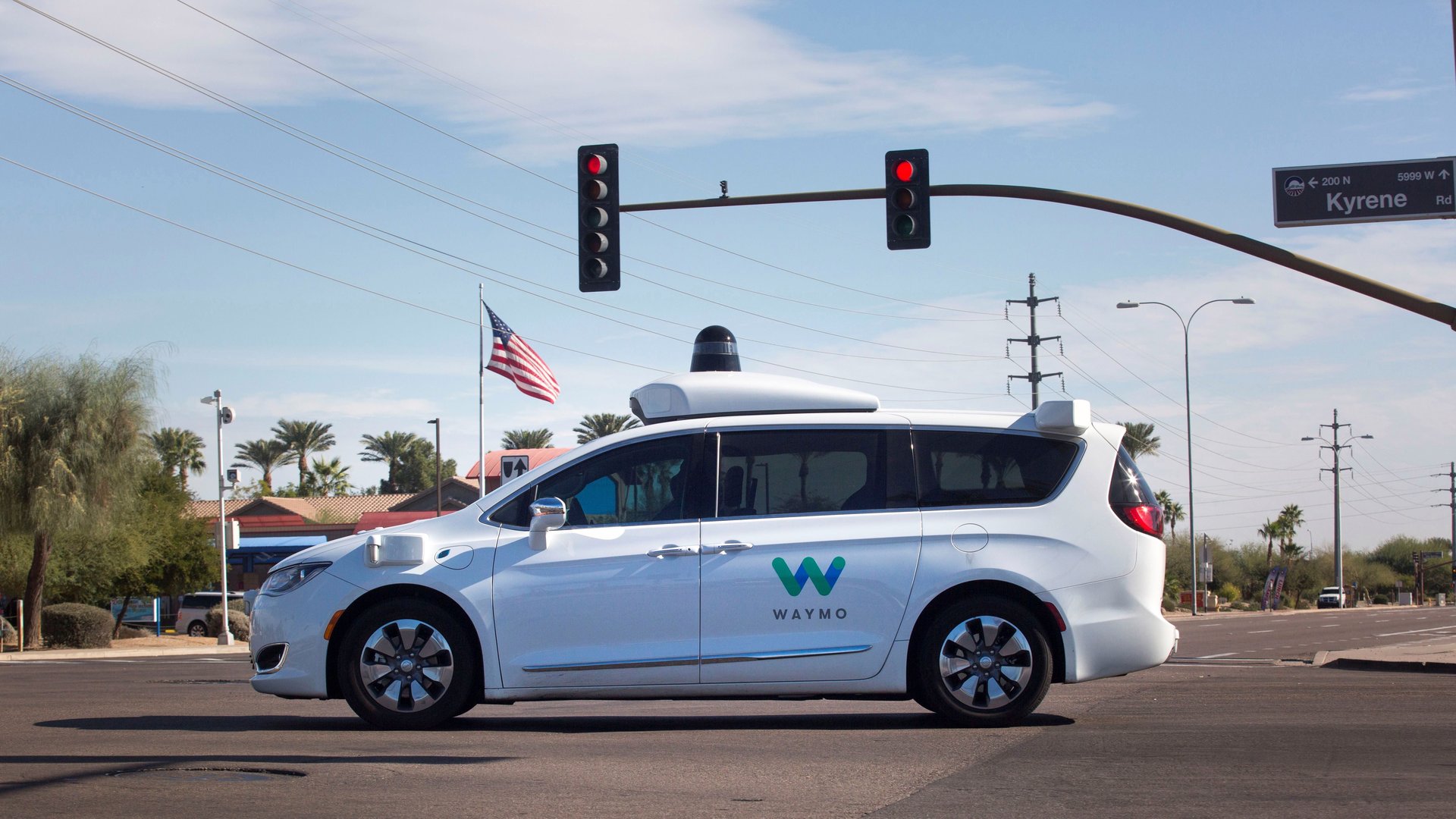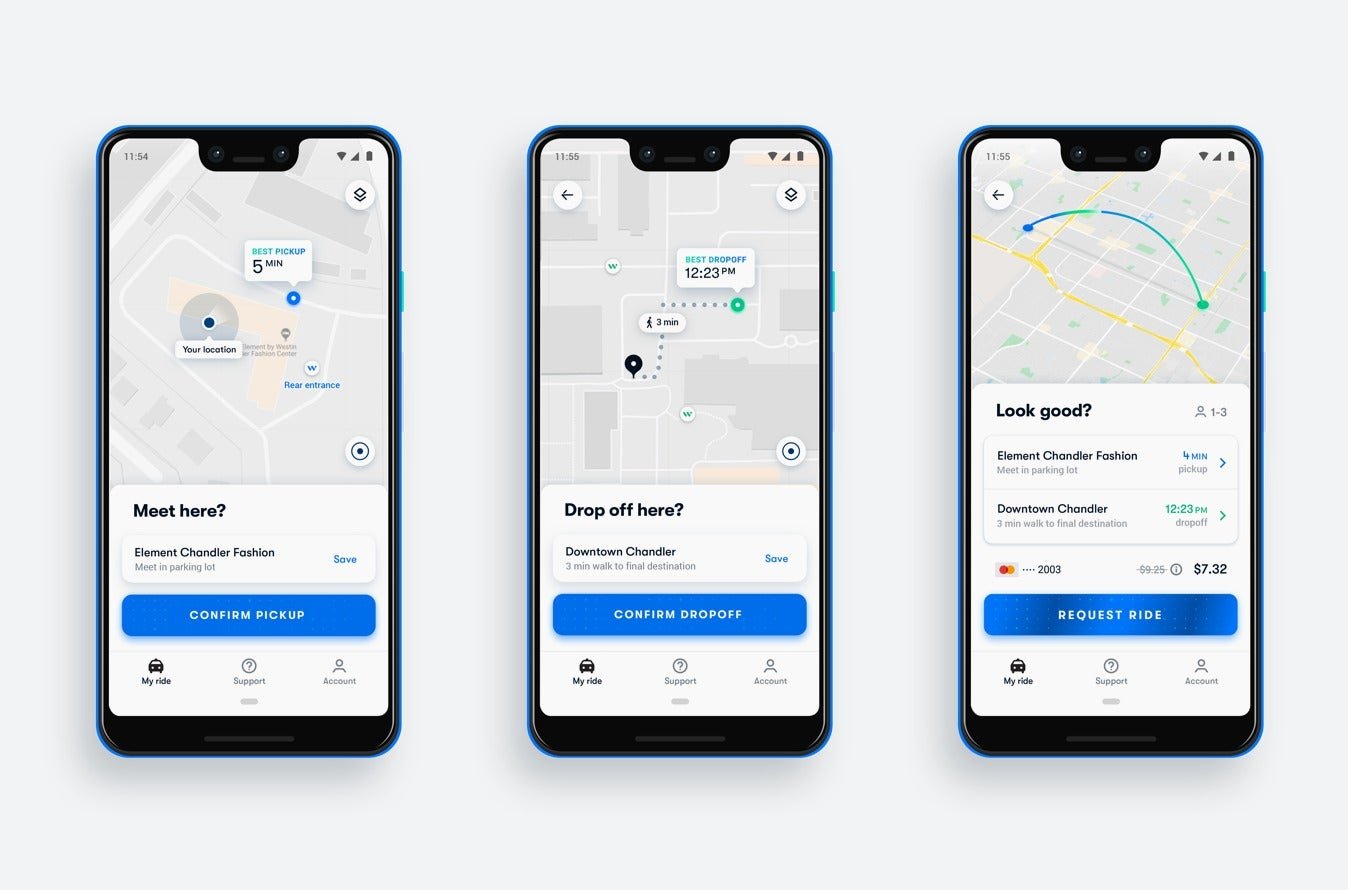Alphabet is coming for Uber
The driverless taxi race is on.


The driverless taxi race is on.
On Dec. 5, Waymo, the driverless car company spun out of Alphabet neé Google, unveiled a commercial ride-hail service, Waymo One, in the greater metro area of Phoenix, Arizona. While it’s far from a robotaxi takeover, hundreds of pre-approved riders in greater Phoenix can now book and pay for a ride in a driverless taxi using Waymo’s technology.
Waymo One is in every way a competitor to Uber. Customers request rides and confirm their location through an app. Waymo decides the best route and drop-off spot, which may require the passenger to walk a few minutes to their final destination, similar to a discount service Uber offers. Waymo even provides a price quote at the time of booking, employing the “upfront pricing” method that Uber introduced in 2016 as an alternative to the traditional taxi meter.

Uber—and every other ride-hail company and automaker—knew this was coming. Waymo began as the Google Self-Driving Car Project in 2009, the same year Uber was founded. Over the next decade, the company logged 7 billion miles in simulation and 10 million on public roads. It started public trials with Phoenix residents in 2017, and received approval from the Arizona transportation department to operate a commercial ride-hail service in the state this past January, promising a commercial service by the end of the year.
Waymo’s progress toward a driverless taxi service is even more striking compared to the roadblocks Uber hit this year. Uber grounded its self-driving fleets after one of its vehicles struck and killed a woman in Tempe, Arizona, in March. The company is only now preparing to resume autonomous testing in Pittsburgh, the New York Times reported (paywall) Dec. 5, and with significantly lower expectations. Cars that drove up to 55 miles per hour before the Tempe accident will now be capped at 25 mph. They also won’t operate at night or in wet conditions.
Waymo has also had its share of scrapes. Over the summer, one of the company’s safety drivers fell asleep on a highway outside of Mountain View, California, and inadvertently disabled the car’s self-driving software, causing it to crash into the highway median (paywall). More recently, a Waymo driver manually swerved to avoid a car in Mountain View and hit a motorcyclist, sending that person to the hospital. Waymo has reportedly started installing “fatigue” cameras (paywall) aimed at its safety drivers’ faces to monitor them for drowsiness.
Waymo One is similarly limited in scope. The program for now is only available to “hundreds” of riders who participated in Waymo’s free Phoenix test program in greater Phoenix, CEO John Krafcik said in a blog post. Its service area is roughly 100 square miles across the suburbs of Chandler, Mesa, Tempe, and Gilbert, with rides supervised by trained safety drivers.
Even with those caveats, Waymo One is a big step forward as Uber’s driverless efforts have taken a step or two backward. For a company that once declared driverless cars “basically existential” to its survival, that should be nothing short of alarming.